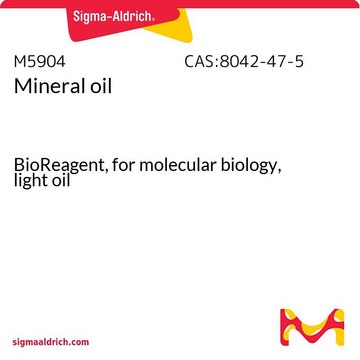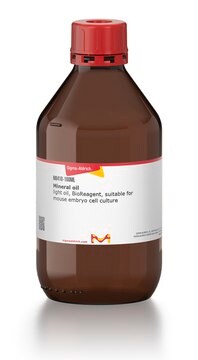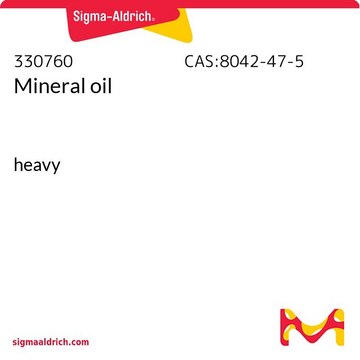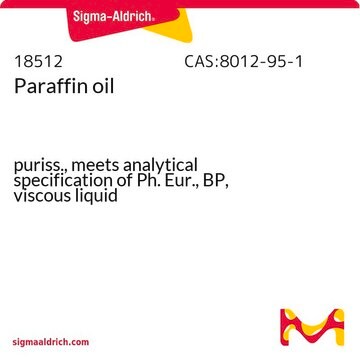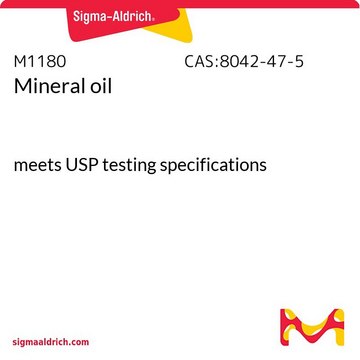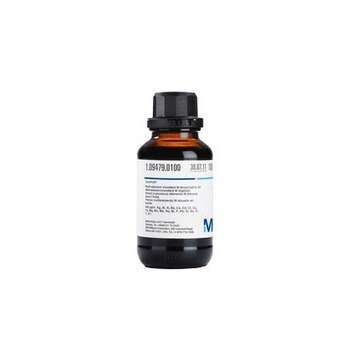M8662
Huile minérale
PCR Reagent
Synonyme(s) :
Mineral oil for PCR
About This Item
Produits recommandés
Qualité
PCR Reagent
Forme
liquid
Conditionnement
vial of 1.5 mL (Total volume 7.5 mL (5 vials))
Technique(s)
PCR: suitable
Couleur
colorless
Indice de réfraction
n20/D 1.467 (lit.)
Densité
0.84 g/mL at 25 °C (lit.)
Activité étrangère
DNase, RNase, protease, none detected
Température de stockage
room temp
Clé InChI
AEOVEGJBKQQFOP-DDVLFWKVSA-L
Vous recherchez des produits similaires ? Visite Guide de comparaison des produits
Description générale
Application
- for routine PCR amplifications
- to improve the heat conductivity between the device and the cycler during reverse transcription-polymerase chain reaction (RT–PCR) amplification
- to prevent evaporation during single-cell MATQ-sequencing performed on Bravo automated liquid handling platform
Caractéristiques et avantages
- Provided in a convenient 5 × 1.5 mL (1 vial) pack size
- Tested for the absence of DNase, RNase, and protease.
Code de la classe de stockage
10 - Combustible liquids
Classe de danger pour l'eau (WGK)
WGK 1
Point d'éclair (°F)
No data available
Point d'éclair (°C)
No data available
Équipement de protection individuelle
Eyeshields, Gloves
Certificats d'analyse (COA)
Recherchez un Certificats d'analyse (COA) en saisissant le numéro de lot du produit. Les numéros de lot figurent sur l'étiquette du produit après les mots "Lot" ou "Batch".
Déjà en possession de ce produit ?
Retrouvez la documentation relative aux produits que vous avez récemment achetés dans la Bibliothèque de documents.
Les clients ont également consulté
Protocoles
Method for bacterial genome analysis and detection of pathogens. Minimize false positive PCRs through lab design and reagents tested for use in bacterial PCR applications.
Protocol using antibody mediated hot start polymerase with a red dye for easy gel loading. Method has short activation period (<1min), and results in higher yields and more specificity over standard PCR methods.
Protocol using antibody mediated hot start polymerase. Method has short activation period (<1min), and results in higher yields and more specificity over standard PCR methods.
Hot Start Taq Polymerase protocol to reduce non-specific amplification, with MgCl2 Optimization
Notre équipe de scientifiques dispose d'une expérience dans tous les secteurs de la recherche, notamment en sciences de la vie, science des matériaux, synthèse chimique, chromatographie, analyse et dans de nombreux autres domaines..
Contacter notre Service technique